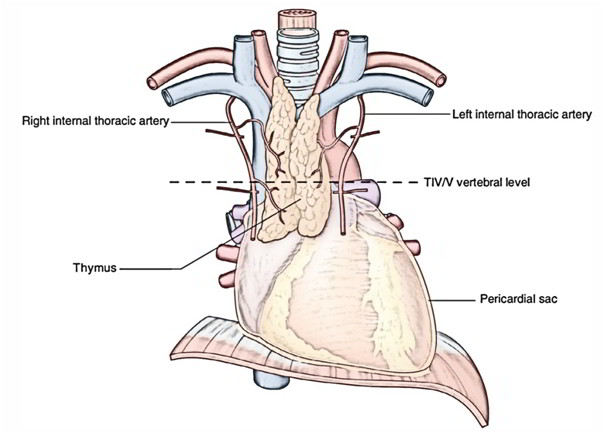The Thymus is a bi-lobed lymphoid organ situated in the superior mediastinum and frequently extends above in the root of neck and below in the upper part of anterior mediastinum.
The upper extent of the thymus can reach into the neck as high as the thyroid gland; a lower portion typically extends into the anterior mediastinum over the pericardial sac.
Involved in the early development of the immune system, the thymus is a large structure in the child, begins to atrophy after puberty, and shows considerable size variation in the adult. In the elderly adult, it’s barely identifiable as an organ, consisting mostly of fatty tissue which is sometimes arranged as 2 lobed fatty structures.
Arteries to the thymus contain small branches originating from the internal thoracic arteries. Venous drainage is generally into the left brachiocephalic vein and possibly into the internal thoracic veins.
Lymphatic drainage returns to multiple groups of nodes at 1 or more of the following locations:
- along the internal thoracic arteries (parasternal);
- at the tracheal bifurcation (tracheobronchial); and
- in the root of the neck.
Clinical Significance
Ectopic Parathyroid Glands In The Thymus
The parathyroid glands develop from the third pharyngeal pouch, which also creates the thymus. The thymus is for that reason a common site for ectopic parathyroid glands and, potentially, ectopic parathyroid hormone production.


 (53 votes, average: 4.74 out of 5)
(53 votes, average: 4.74 out of 5)